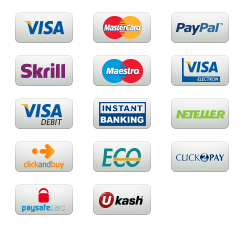No More Worries!
 Our orders are delivered strictly on time without delay
Our orders are delivered strictly on time without delay Paper Formatting
- Double or single-spaced
- 1-inch margin
- 12 Font Arial or Times New Roman
- 300 words per page
No Lateness!
 Our orders are delivered strictly on time without delay
Our orders are delivered strictly on time without delay Our Guarantees

- Free Unlimited revisions
- Guaranteed Privacy
- Money Return guarantee
- Plagiarism Free Writing
Challenge of Linguistic Diversity: Insights from Jamila Lyiscott’s TED Talk and the Odyssey of Odysseus
How does Jamila Lyiscott’s TED Talk challenge traditional views of “proper” English, and what implications does this have for how we understand linguistic diversity and identity in educational and professional settings? Make a connection to Odysseus in this response.
What are some ways we can work to become better at recognizing and valuing the linguistic diversity of scholars and those within our communities?
Sample Answer
The Challenge of Linguistic Diversity: Insights from Jamila Lyiscott’s TED Talk and the Odyssey of Odysseus
Thesis Statement
Jamila Lyiscott’s TED Talk powerfully challenges traditional views of “proper” English by advocating for the recognition of linguistic diversity as a vital part of identity. This perspective not only reshapes our understanding of language in educational and professional settings but also prompts us to reflect on the narratives of figures like Odysseus, who navigated diverse cultures and languages in his journey.
The Challenge to Traditional Views of English
In her TED Talk, “3 Ways to Speak English,” Jamila Lyiscott, a self-proclaimed “tri-tongued orator,” articulates the complexities of linguistic identity. She brings to light the notion that “proper” English is often a construct rooted in privilege and power dynamics that marginalizes other forms of expression. Lyiscott shares her experience as a Black woman who seamlessly shifts between different dialects and styles of English, emphasizing that every form of communication holds value and deserves respect.
Lyiscott’s argument challenges the long-standing belief that only one standardized form of English is acceptable. By showcasing her own linguistic versatility, she encourages audiences to embrace the richness of linguistic diversity. This is particularly significant in educational and professional contexts, where students and professionals from varied backgrounds may feel pressured to conform to a singular standard. Such pressures can lead to feelings of inadequacy and alienation, ultimately stifling creativity and authentic self-expression.
Implications for Understanding Linguistic Diversity
The implications of Lyiscott’s message are profound. In educational settings, recognizing linguistic diversity can lead to more inclusive curricula that validate students’ home languages and dialects. Teachers who appreciate this diversity can create environments where students feel empowered to share their unique voices, enhancing engagement and learning outcomes. In professional contexts, embracing different forms of communication fosters innovation and collaboration, as diverse perspectives contribute to richer ideas and solutions.
Similar to Odysseus, who faced numerous linguistic and cultural challenges on his journey home, individuals navigating diverse environments today must also adapt their communication styles. Odysseus’ ability to engage with various peoples—whether through cunning speech or strategic silence—mirrors the adaptability required in modern workplaces. Just as Odysseus learned from each encounter, we too can cultivate understanding by valuing the diverse linguistic backgrounds of our peers.
Recognizing and Valuing Linguistic Diversity
To better recognize and value linguistic diversity in our communities, several steps can be taken:
1. Educate Ourselves: Understanding the historical and social contexts of different dialects can help dismantle biases against non-standard forms of English. Workshops and training sessions focusing on linguistic diversity can raise awareness.
2. Encourage Open Dialogue: Creating spaces where individuals feel comfortable sharing their linguistic backgrounds fosters an environment of acceptance. Facilitating discussions around language can lead to greater appreciation for different dialects.
3. Incorporate Diverse Languages in Education: Schools should integrate literature and resources from various cultures that reflect different dialects. This not only enriches the curriculum but also affirms the identities of students who speak those languages.
4. Promote Representation: In professional settings, showcasing individuals who embody linguistic diversity can serve as powerful role models for others. Highlighting diverse voices in leadership roles can help challenge traditional narratives about language proficiency.
5. Celebrate Cultural Events: Organizing events that celebrate linguistic diversity—such as language festivals or storytelling nights—can create community bonds and encourage pride in distinct linguistic identities.
Conclusion
Jamila Lyiscott’s TED Talk serves as a clarion call for embracing linguistic diversity as an essential aspect of identity. By challenging conventional notions of “proper” English, Lyiscott invites us to reconsider how language shapes our experiences, both in education and professional spheres. Drawing parallels with Odysseus highlights the importance of adaptability and understanding in navigating diverse communities. As we work toward recognizing and valuing linguistic diversity, we not only enrich our own lives but also contribute to a more inclusive society where every voice is heard and respected.
This question has been answered.
Get AnswerPrice Calculator
12% Discount

- Research Paper Writing
- Essay Writing
- Dissertation Writing
- Thesis Writing
Why Choose Us

- Money Return guarantee
- Guaranteed Privacy
- Written by Professionals
- Paper Written from Scratch
- Timely Deliveries
- Free Amendments

